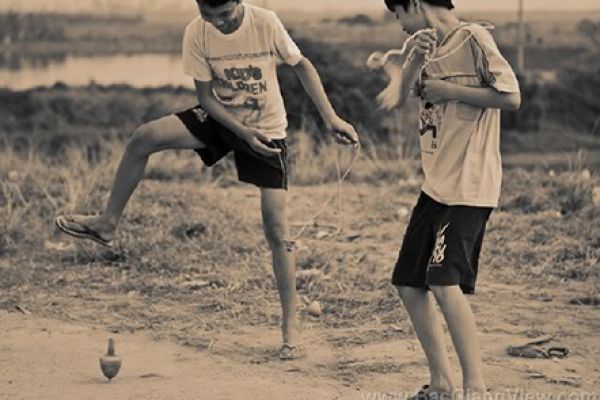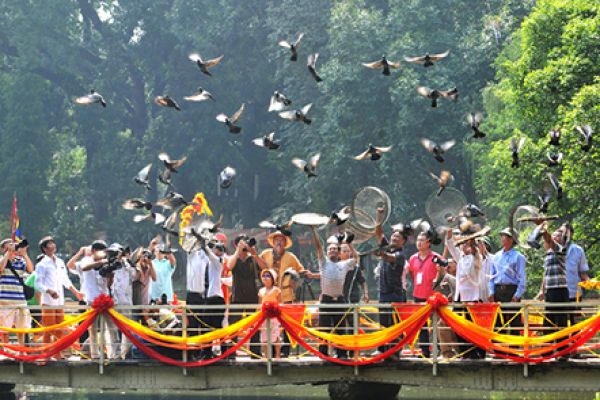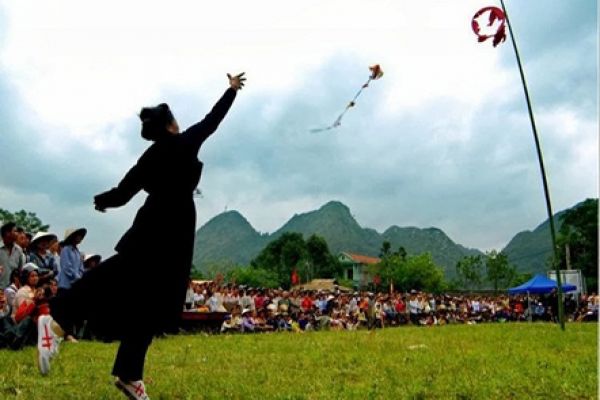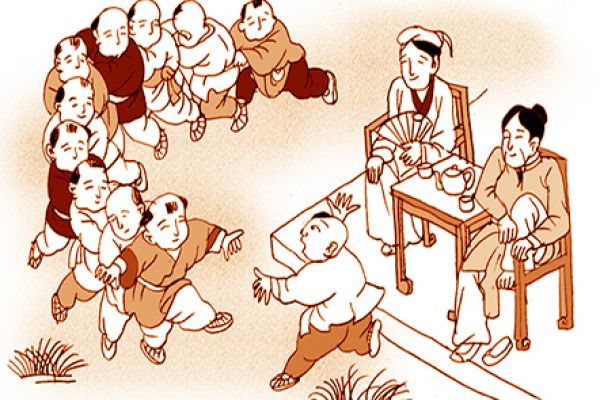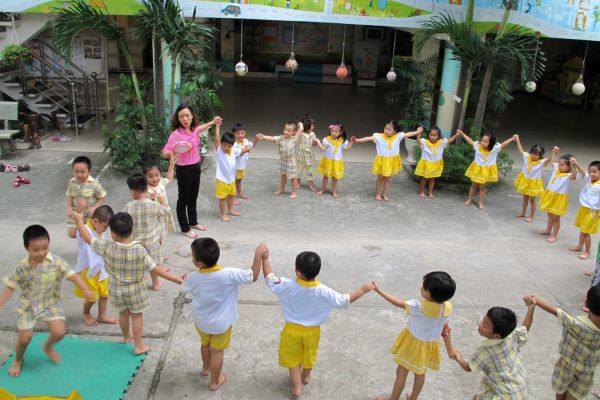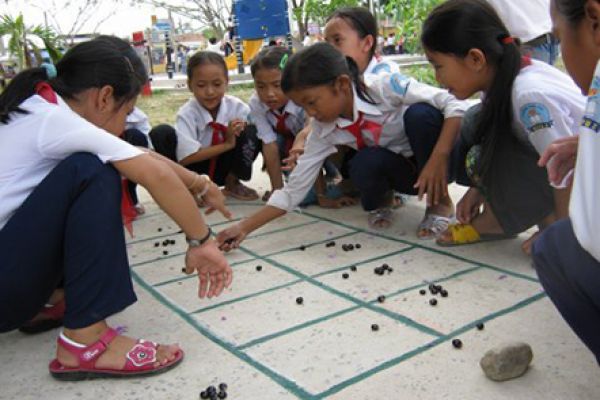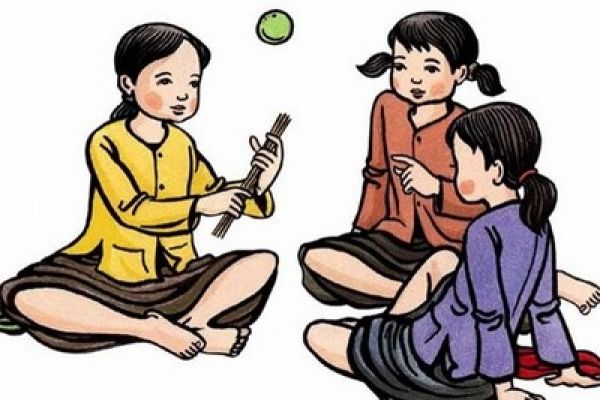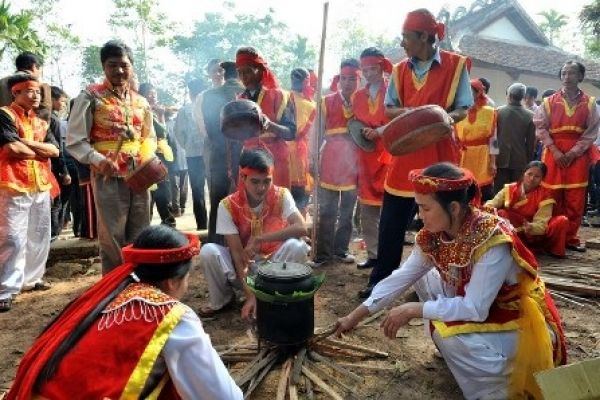Human chess is a variant of chess, often played by people who take on the roles of the various chess pieces (king, knight, bishop and so on). This is typically done on an outdoor field, with the squares of the board marked out on the grass. A move resulting in a piece being taken from the board will cause a choreographed fight to be played out to determine whether the piece is actually taken.
In human chess, however, the pieces are all people: 32 people in all. One side consists of 16 boys and the other of 16 girls. Each team wears a different colour.

The atmosphere often become bustling with the human chess competition. In the early morning, many people gather and wait for the competition. There is often three drum-rolls signalling the start of the game. Two players in Vietnamese traditional dresses appeared, sitting on two high platforms behind chessmen. The first player starts the game by shouting and a chessman left the position to perform martial arts techniques before reaching another position on the chessboard. The second player’s turn, he also shouts and his chessman moves and performs beautiful skills of martial arts. They in turn play the game. If one of them lost his chessmen, these have to leave the chessboard. The spectators triumphantly cheer whenever there is a nice performance, making chessmen try their best to show their skills. After nearly two hours, the human chess competition finishes. However, the spectators often do not want to go home, they would like the organising board to continue the game.
Whenever taking part in Vietnamese village and temple festivals, you will have a chance to watch a traditional game - human chess (“cờ người”), which is the favourite to a great deal of Viet people .
Surely that you will be attracted by the game’s quietude and delicacy, totally in contrast to some other games practiced at festivals.

